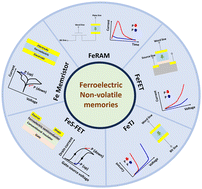Growth of emergent simple pseudo-binary ferroelectrics and their potential in neuromorphic computing devices
Abstract
Ferroelectric memory devices such as ferroelectric memristors, ferroelectric tunnel junctions, and field-effect transistors are considered among the most promising candidates for neuromorphic computing devices. The promise arises from their defect-independent switching mechanism, low energy consumption and high power efficiency, and important properties being aimed for are reliable switching at high speed, excellent endurance, retention, and compatibility with complementary metal–oxide–semiconductor (CMOS) technology. Binary or doped binary materials have emerged over conventional complex-composition ferroelectrics as an optimum solution, particularly in terms of CMOS compatibility. The current state-of-the-art route to achieving superlative ferroelectric performance of binary oxides is to induce ferroelectricity at the nanoscale, e.g., in ultra-thin films of doped HfO2, ZrO2, Zn1−xMgxO, Al−xScxN, and Bi1−xSmxO3. This short review article focuses on the materials science of emerging new ferroelectric materials, including their different properties such as remanent polarization, coercive field, endurance, etc. The potential of these materials is discussed for neuromorphic applications.

- This article is part of the themed collections: Memristors and Neuromorphic Systems and Recent Review Articles


 Please wait while we load your content...
Please wait while we load your content...